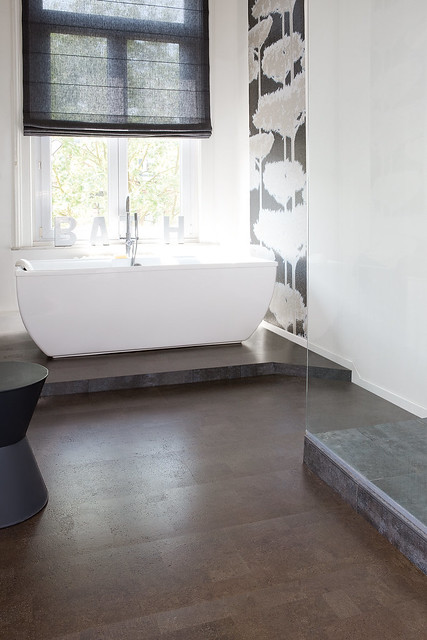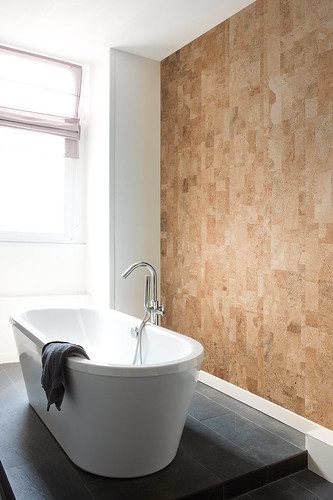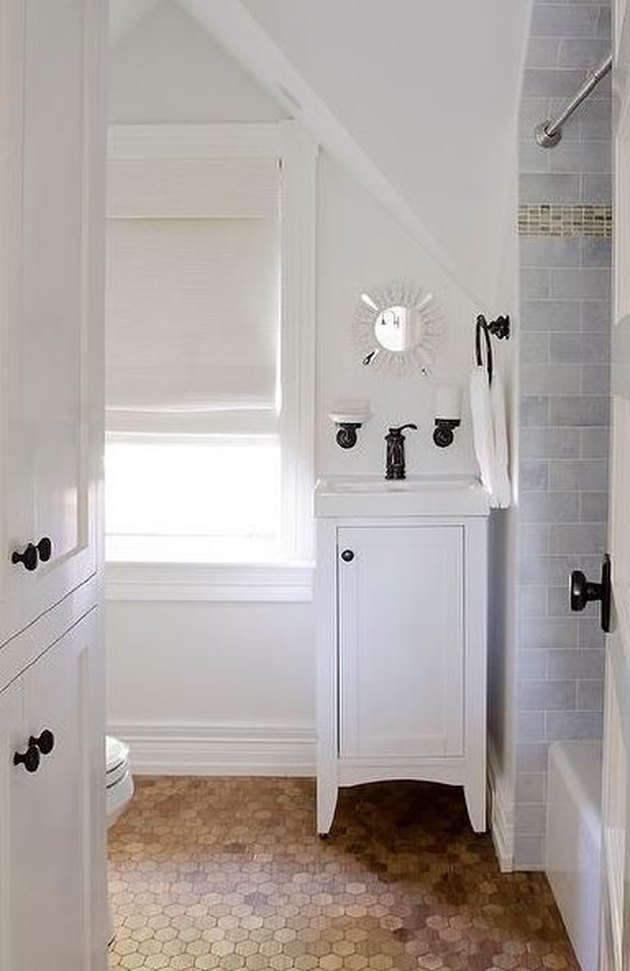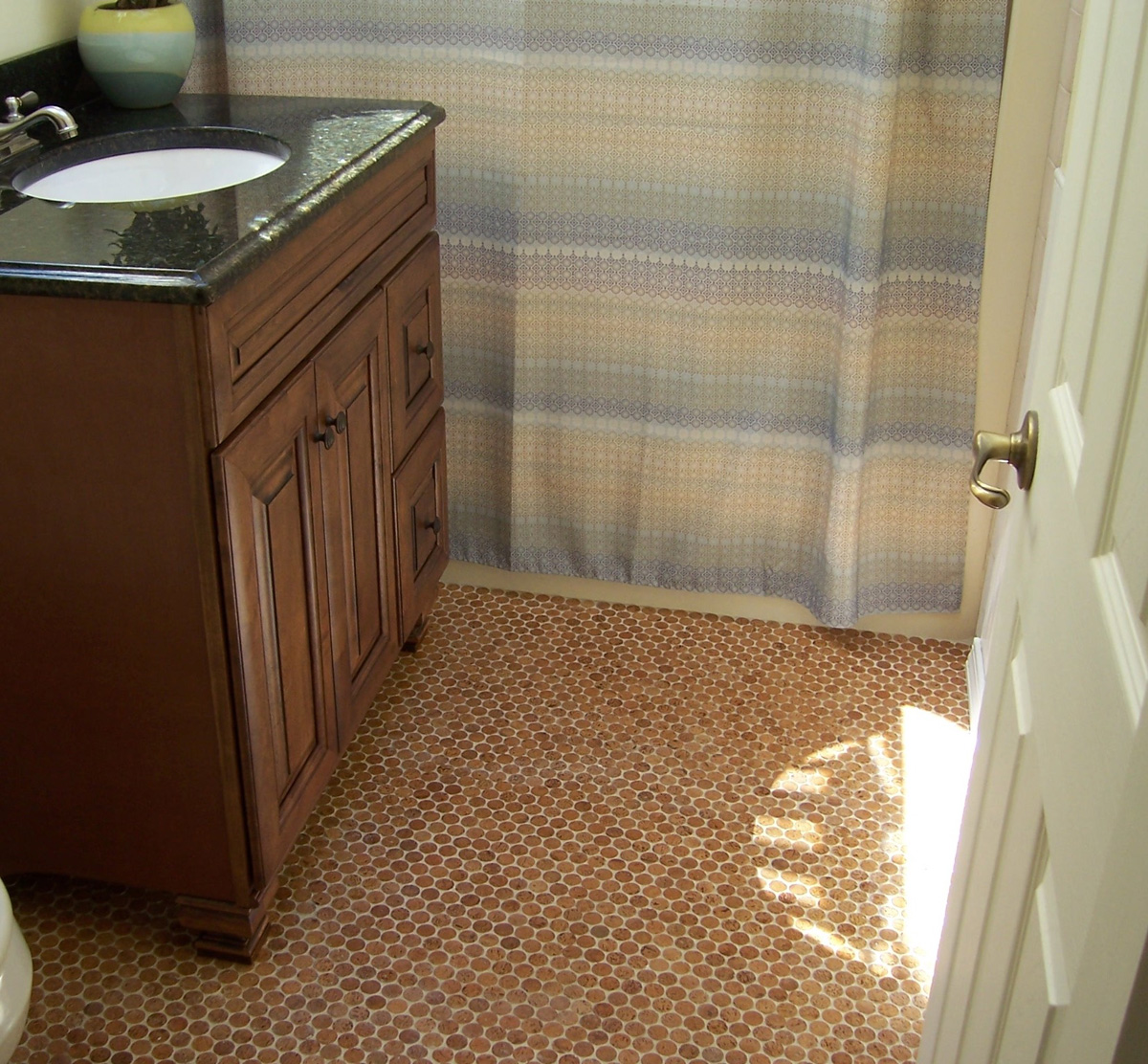Cork flooring offers unique advantages for bathrooms, but requires careful consideration. Its natural water resistance comes from suberin, a waxy substance in cork cells that repels moisture. The material’s soft, cushioned surface provides warmth underfoot—a welcome feature in bathrooms. Cork’s natural antimicrobial properties inhibit mold and mildew growth, beneficial in humid environments. However, prolonged exposure to standing water can damage seams, making proper sealing essential. Floating cork planks with waterproof cores perform better than traditional glue-down tiles in wet areas.
Installation and maintenance impact cork’s bathroom performance. Choose commercial-grade cork with UV-cured acrylic finishes for maximum water protection. Seams should be sealed with waterproof adhesive during installation. Daily wipe-ups prevent moisture penetration, while periodic resealing maintains protection. Avoid steam mops, which can force water into the material. Proper subfloor preparation with moisture barriers is crucial, especially over concrete slabs. Compared to ceramic tile, cork provides better slip resistance and noise reduction, making it safer and quieter.
The bathroom’s size and usage patterns affect cork’s suitability. Powder rooms with minimal moisture exposure are ideal candidates. Full bathrooms require extra precautions—install cork only in dry zones away from showers and tubs. Waterproof vinyl or tile remains preferable for shower surrounds. Families with young children might prefer more impervious options, as cork can stain from toiletries and cosmetics. In well-ventilated bathrooms with careful users, cork’s comfort and eco-friendly appeal often outweigh maintenance requirements.
Cork’s environmental benefits make it attractive for sustainable bathrooms. As a renewable resource harvested from cork oak bark, it has minimal ecological impact. The material provides natural insulation, reducing heat loss through floors. Many cork products use low-VOC adhesives and finishes, improving indoor air quality. However, its softness makes it prone to dents from heavy objects like toiletry drops. Compared to luxury vinyl plank (LVP), cork offers better warmth but less waterproofing. In moderate-use bathrooms, these trade-offs may be acceptable for homeowners prioritizing natural materials.
Alternatives like tile or vinyl often outperform cork in wet areas, but cork remains viable with precautions. Choose click-lock floating floors with waterproof cores for easier replacement of damaged planks. Apply marine-grade polyurethane sealant for enhanced protection. Use bath mats near sinks and tubs to absorb spills. While not ideal for every bathroom, properly installed and maintained cork flooring provides a unique combination of comfort, sustainability, and style. Its success depends on realistic expectations and commitment to proactive care in moisture-prone environments.
Cork Flooring: Bathroom The options for cork flooring
Surprising Facts You Need to Know Before Installing Cork Bathroom Flooring Hunker
Available ideas and pictures of cork bathroom flooring tiles
Cork Floors In Bathroom
Cork Flooring In A Bathroom? Pros & Cons – Page 4 – Flooring – Contractor Talk
Stunning ideas for wood like ceramic tile in bathroom
Sheila’s Hostel – Cork, Ireland Reviews – Hostelz.com
Different Kitchen Flooring Types – Idalias Salon
Related Posts:


:max_bytes(150000):strip_icc()/Beagledogsleeping-GettyImages-902812228-b1dee9038f8e4cfc8bd18031b548c28b.jpg)







